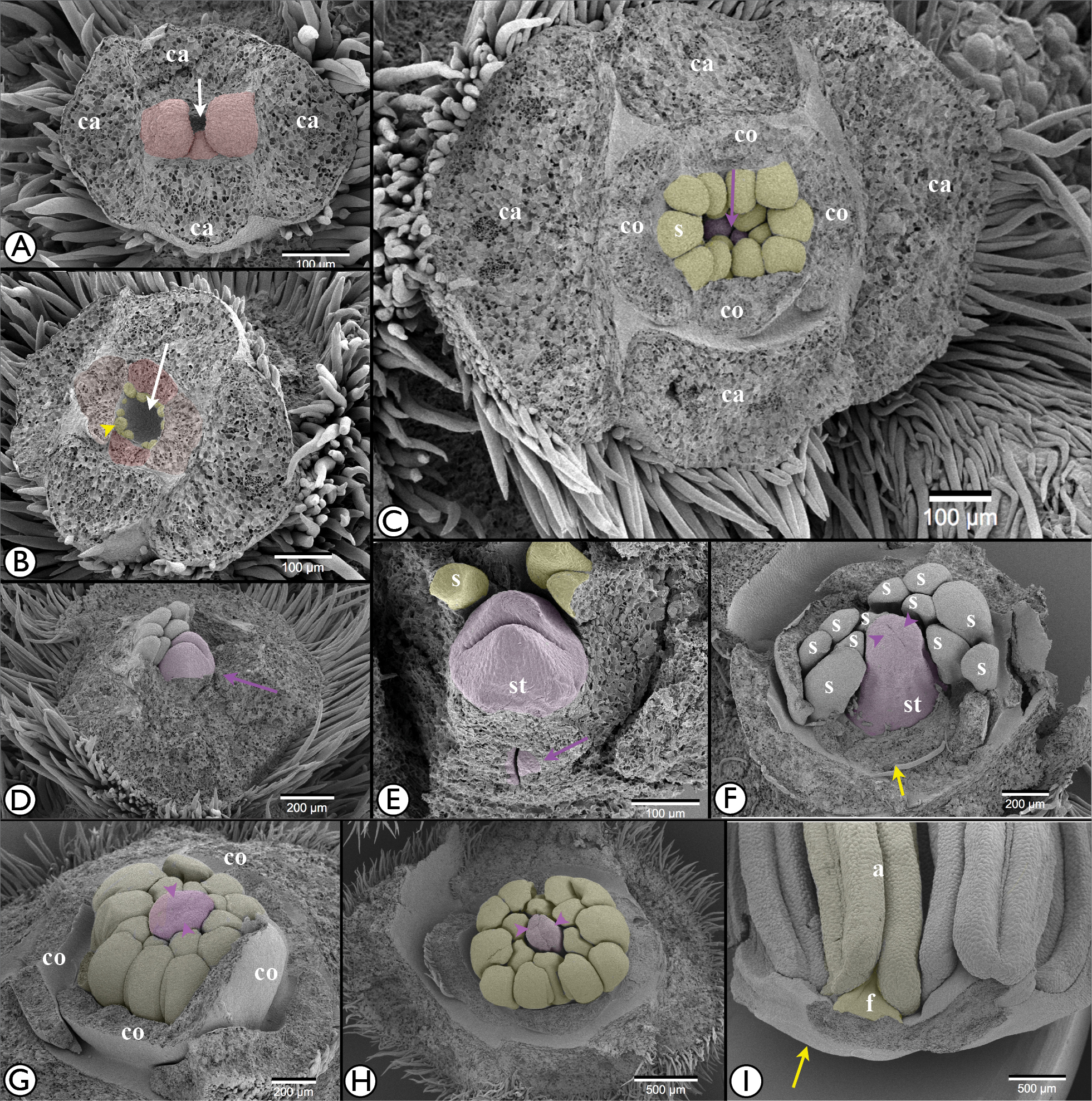
|
||
|
SEM images of successive stages of the floral development in Dialypetalanthus fuscescens. A–H: apical view, I: lateral view. A. Floral apex (white arrow) becomes a central cavity, surrounded by a second pair of opposite petals, now called corolla lobes at 90° with respect to the previous pair. Sepals are from now onwards called calyx lobes. B. Appearance of a row of stamen primordia (one indicated by yellow arrowhead) on the distal part of the apical central cavity (white arrow). C. Centripetally of the developing stamens, a second ‘whorl’ of stamen primordia appears. Floral apex differentiates into two bulges surrounding a central split (purple arrow). D. The central bulges are raised from a common base (purple arrow), consisting of a single style. E. Below the single style, one out of two locules filled up with a U-shaped placenta (purple arrow). F. Developing style with two stigmas (purple arrowheads). Surrounding the base of the style, a scar of removed stamens shows a common androecial base (yellow arrow). G–H. Variable number of stamens (16–17). Single style/stigmas (purple arrowheads) protruding above developing stamens. I. Stamens with a common base (yellow arrow). Colour code: purple, gynoecium; red, corolla; yellow, androecium. Symbols: a, anther; ca, calyx (lobe); f, filament; cl, colleter; co, corolla (lobe); s, stamen; st, style. |